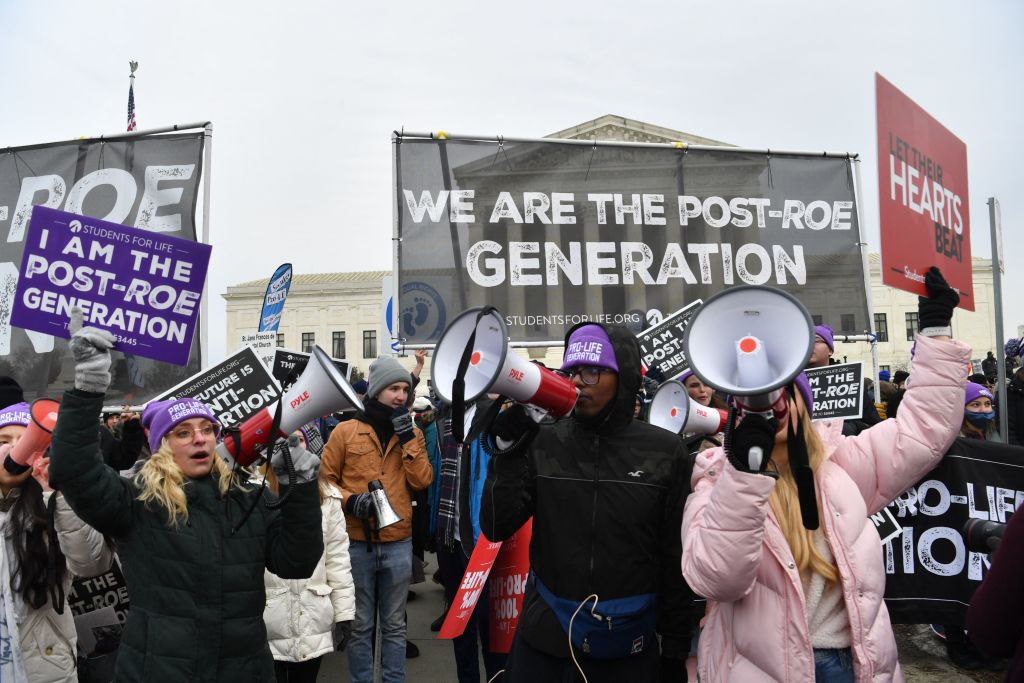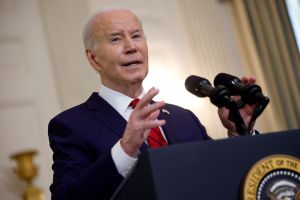Few releases have been better timed. “By the time this book is in your hands,” write authors Ryan T. Anderson and Alexandra DeSanctis, “we will all know how the Court has ruled.” And they were right, just barely: I began reading Tearing Us Apart: How Abortion Harms Everything and Solves Nothing the day after the Supreme Court overturned Roe v. Wade in the Dobbs v. Jackson Women’s Health Organization decision.
Perhaps some might counter that now that the abortion movement has suffered such a blow, Tearing Us Apart is actually poorly timed. We won, didn’t we? Why rehash all the arguments against abortion in light of victory? Yet such thinking fails to understand how terribly toxic fifty years of an American abortion regime has really been. A post-mortem is in order, as is a quo vadis reflection: where does the pro-life movement go now?
Of course, abortion harms an unborn human child. The moment a sperm fertilizes an egg, a new organism comes into existence, and that organism is always a human one. Even at the very beginning, when that new organism is a one-celled zygote, it is an organism of the human species. It may not have all the same qualities as a baby at the moment of birth, but it is a human developing them. Moreover, much of that development happens quite early. The brain begins to form as early as the fifth week (which is before many women even realize they are pregnant); a heartbeat can be detected at six weeks; the sex of the baby can be discerned at ten weeks; and the child in the womb can suck its thumb at eighteen weeks.
If that child in utero is human, then it possesses an intrinsic dignity and worth, and has rights just like the child delivered from the womb. And one of the core functions of government is to protect innocent human life from lethal violence. Thus, note Anderson and DeSanctis, abortion is a repudiation of biology, law and politics.
But it’s not just children who suffer. The abortion regime has “injected violence into the sacred relationship between a mother and her child.” Indeed, our culture, often with state sanction, has told women that their children should be sacrificed on the altar of choice and career. Counterintuitively, it’s also undermined women’s personal welfare, because it has popularized the idea that the birth of a child is the choice solely of the mother, which in turn has accelerated the “feminization of poverty.” About 20,000 American women every year suffer from significant medical problems as a direct result of an abortion procedure.
There’s also racial and disability components. Although black women constitute only 14 percent of the female population, they represent over one third of abortions in the United States. Latino women are twice as likely as white women to have an abortion. And somewhere between 61 percent and 93 percent of children with Down syndrome are aborted in this country. Parents often abort children who test positive for rare and serious genetic disorders, though according to a 2022 New York Times report, those tests are wrong in as many as 90 percent of cases.
Then there’s the effect of abortion on our medical system, facilitating a paradigm in which medical providers lie to the public about the biological realities of human life inside the womb. “Do no harm,” the most fundamental principle of the Hippocratic Oath, is violated during an abortion. Organizations like the American College of Obstetricians and Gynecologists act as “transparently political abortion advocacy group[s].”
The abortion regime has also confused our legal landscape. Even Ruth Bader Ginsburg acknowledged that the legal reasoning behind Roe was seriously flawed. Before and after its overturning, the left made countless references to stare decisis, though their appeals to that concept are so ad hoc as to be laughable. Should the Court have upheld Plessy v. Ferguson or Pace v. Alabama? Do they know how many times the Supreme Court has overturned a previous ruling? More than 300.
Abortion has also poisoned our politics. One political party — historically on the side of the vulnerable and disenfranchised — has become so beholden to an absolutist pro-choice ideology that it wants to permit abortions even under the most horrific of circumstances. Pennsylvania Governor Robert Casey was prohibited from speaking at the 1992 Democratic National Convention. There is only one pro-life Democrat sitting (precariously) in the House of Representatives.
Finally, there’s the cultural impact. Corporate legacy media, the entertainment industry and woke capitalists unrepentantly carry water for the pro-choice cause, perpetuating falsehoods about abortion and the pro-life cause. Journalists have given up even pretending to be unbiased purveyors of the news when it comes to abortion.
Children, mothers, families, racial minorities and the disabled have suffered under fifty years of Roe. Our medical system, law, politics and culture have all been compromised by its lies. Anderson and DeSanctis are right to say it harms everything. “The only proper response to the past five decades of destruction is to dismantle every part of the system that perpetuates abortion,” they write.
Overturning Roe, then, is only the beginning. All of the medical, legal and political infrastructure upholding the abortion regime must be dramatically rehabilitated. Pro-life policies are required at state and federal levels — including, the authors urge, a new amendment to protect unborn children under the Fourteenth Amendment. A pro-life culture must be promoted in the media and entertainment industry. And “for every abortion clinic in our country, there should be dozens of pregnancy-resource centers helping women reject abortion.”
That’s going to require a huge investment of taxpayer-funded financial resources. But if we’re talking about our children, it’s all worth it.


















